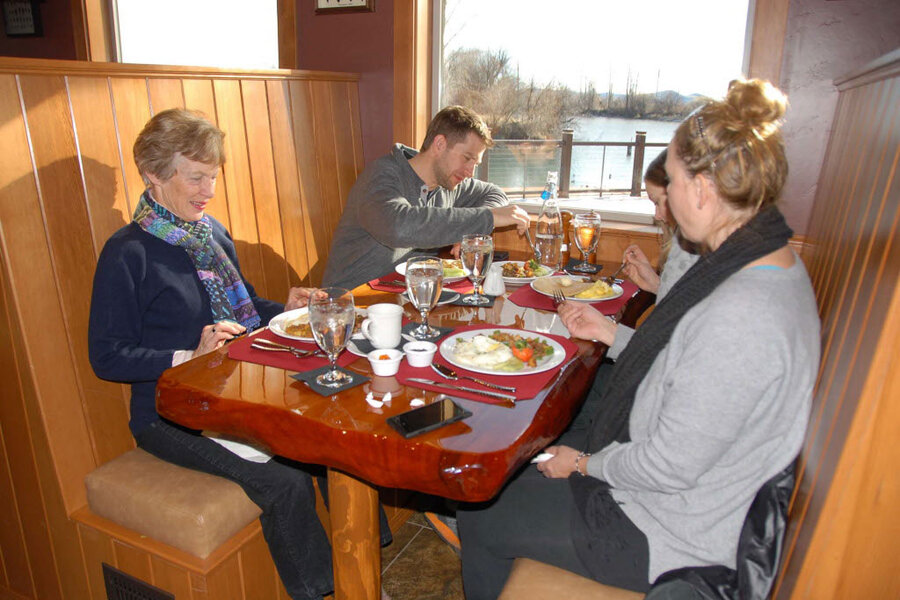Pittsburgh restaurant goes 'tip-less': A model for the US industry?
Loading...
There's a revolution starting and its epicenter could be as close as your local diner.
Starting in April, the owners of one Pittsburgh restaurant have decided to enact a "no-tip" policy, and instead have offered to pay employees a base salary of $35,000. Bar Marco, located in the Strip District of Pittsburgh, as part of its employee compensation package will also offer healthcare benefits and a share of the business.
Co-owner Justin Steel told WPXI News, located in Pittsburgh, "We think the risk for our business three years in is to not do this because we want to retain the quality of employees who we have now.”
Though this change would bring Bar Marco more in line with the restaurant industry in Europe, the question remains: Is it a sustainable business model for American restaurant owners?
In Europe, servers are better paid as it is culturally viewed as a more professional industry, according to travel expert Rick Steves. Whereas in the United States, waiting tables is often seen as a more transitional position between jobs or a part-time job for people who are looking to earn a little extra money.
Now some American restaurant proprietors are calling to an end of having their wait staffs rely on the generosity of the diner in order for servers' earnings to exceed the minimum wage. Owner, Gabriel Frem, of The Brand 158 restaurant in Glendale, Calif. did away with tipping early last year because he claimed tipping increased competition among employees, according to a story from CBS Moneywatch.
Mr. Frem also said in an interview with the Los Angeles Times, "We think that if we stabilize the lives of our employees, they can then focus on the customer."
Some non-tipping restaurants like Brand 158 and Bar Marco will not raise their food prices to cover the cost of making their employees salaried. Others like the Packhouse in Newport, Ky., now pay their part-time employees $10 an hour or offer them 20 percent of the total food sales that night, whichever is higher, according to Cincinnati.com. However, the Packhouse price increases to cover employee costs offset to the customer leaving a 20 percent tip.
The quality of employees appears to be a major motivating factor behind some owners adopting a no-tip policy. In 2013, the Bureau of Labor Statistics, reported that average annual turnover rate in the restaurant and hospitality industry was 62.6 percent – some 20 percentage points higher than all other private-sector jobs.
In the early 20th Century, tipping was outlawed in a number of states but by the 1920s anti-tipping laws were repealed and the tipping system has become institutionalized. In all but seven states the hourly wage paid to wait staff is well below the minimum wage, and some states still use the federal wage of $2.13, which has not budged since 1991.
The proposed Minimum Wage Fairness Act would bump the federal minimum wage to $10.10 an hour and raise the federal wage for servers to 70 percent of the minimum wage. The National Restaurant Association is opposed to raising the minimum wage as it cites the costs for restaurant owners of a weak economy and complying with the Affordable Care Act as reasons for not supporting the wage increase. They also claim that many restaurants would have to limit hiring and raise prices to meet the increased wage it would have to pay its employees.
However, in the same Cincinnati.com story they included a study from the US Department of Labor and Statistics where 9,000 restaurants were investigated from 2010-2012 showed that 85 percent violated wage laws, including the law that stipulates all restaurant owners are required to make up the difference between a server's sub-minimum wage and the the minimum wage within a specified time period.
According to the Restaurant Opportunities Center, many owners fail to comply with this pat of the law, apart from high-end dining where servers can usually expect customers' tips to allow them to earn more than the minimum wage. As for casual dining, servers livelihoods are left in the hands of diners who will carry their own presumptions about how they should be served and what qualifies as good service, which can leave wait staffs struggling to reach the minimum wage.
The $10 an hour policy or 20 percent of sales model at the Packhouse in Kentucky has the employees, all part-time, now earning an average of $15 an hour.








